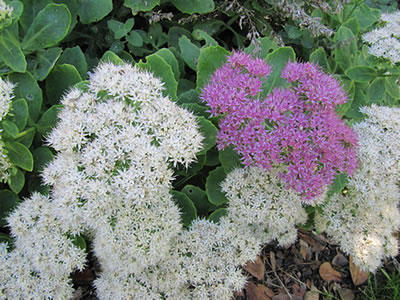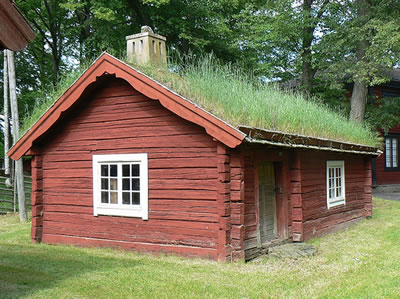People decide to install green roofs on their home extensions, garages and other garden buildings for a number of different reasons. Some are looking to increase the value of their home, whereas others do it for aesthetic pleasure. When it comes to designing your rooftop garden, you will need to decide between various different plant species. Here we will provide our top tips on how to choose the best plants for your green roof.
Factors to consider when designing an extensive green roof
Extensive green roofs typically have very shallow growing medium depths. The growing medium is usually fairly inorganic in order to keep the weight to a minimum. In order for plants to be suitable for extensive green roofs, they must have shallow roots and be capable of surviving in dry conditions. Although you will have less choice of plants, your extensive green roof will be cheap to install and maintain.
Plants for extensive green roofs
The most popular species of plants found on extensive green roofs are succulents. Sedum, Delosperma and other succulents retain water during dry spells, meaning that they can go for two to three weeks without being watered. Sedums come in a variety of colours and mature at different times of year. Choosing sedums means you will be able to benefit from year round colour and interest on your extensive green roof garden. Sedums are also draught-resistant and provide excellent nectar sources during the summer time.
Low-growing, stress-tolerant grasses are also commonly found growing on extensive green roofs. They can be planted alone or planted as part of mixed vegetation to provide visual contrast and structural diversity.
Factors to consider when designing an intensive green roof
Intensive green roofs tend to have a deeper growing medium and can therefore accommodate a wide variety of plant species including trees and shrubs. If you are planning on planting large plants, you need to ensure that your intensive green roof can support the weight. It is also worth keeping in mind that unlike extensive green roofs, intensive green roofs require regular watering and maintenance.
Shrubs
Shrubs are commonly planted on intensive roof top gardens to add visual variety. Shrubs come in all different sizes, but some of the most popular choices are smaller shrubs like the Hebe and Lavandula.
Herbaceous perennials
Herbaceous perennials can be planted on intensive green roofs, but it is worth keeping in mind that they require plenty of water and nutrients in order to remain healthy. They may also require additional shelter during periods of extreme temperature and draughty winds. Although they require a little extra care, herbaceous perennials are perfect for adding visual and structural diversity to your roof garden.
Herbs
Herbs offer a great source of pollen and nectar. Some of the most popular herbs found growing on intensive green roofs include thyme, oregano, sage and chives. In order to keep them healthy, herbs require regular pruning.
Wildflowers
Want to add colour and beauty to your intensive green rooftop? Why not invest in some beautiful British wildflowers. Whilst it is likely that you already have your favourite wildflowers, we think cowslip, cornflower, catmint, daisies and meadow buttercups make beautiful choices.
Vegetables
Intensive green roofs are not only suitable for growing plants but vegetables too. As long as you have an irrigation system in place, you should have little trouble growing a wide range of vegetables including radishes, spinach, carrots and beetroot. Providing you have a deep enough growing medium you may also be able to grow cabbage, broccoli and cauliflowers.
Conclusion
When it comes to designing your green rooftop, it is important to make sure you choose plant types that will thrive in the new environment. Carry out as much research as possible and do not be afraid to ask questions to help you make the right planting decisions for your intensive or extensive green roof.
Image credits: wallygrom & amandabhslater




